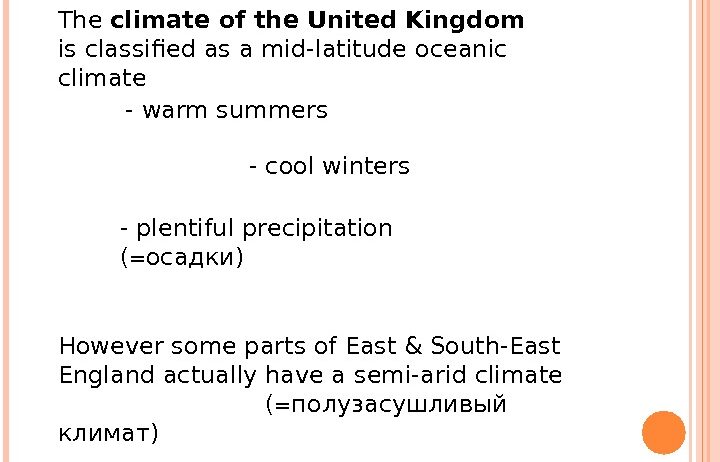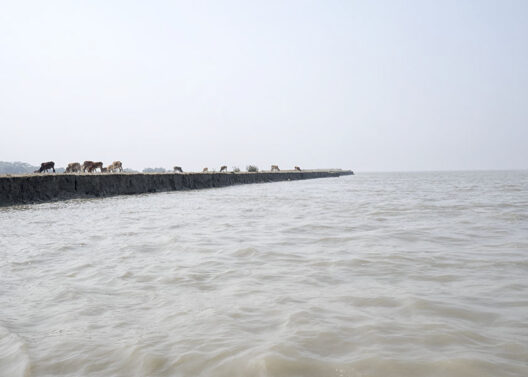England’s climate is a tapestry of nuances, woven from the influences of both maritime and continental weather patterns. This multifaceted environment captivates the imagination of many, often leading to the popular sentiment that it possesses an intrinsic unpredictability. It is what one might call a mild, moody domicile, teeming with meteorological surprises that maintain the attention of scientists, meteorologists, and simply curious observers.
To understand England’s climate, one must first acknowledge its geographical positioning. The island nation resides in the North Atlantic, vividly influenced by the warming Atlantic Ocean currents. These currents bestow upon England a temperate climate, characterized by relatively moderate temperatures throughout the year. Unlike the continental climates that experience harsh winters or sweltering summers, England’s weather remains temperate, though not immune to variances.
The prevailing winds, particularly the southwest winds, play a crucial role in shaping English weather. These winds bring moist air from the Atlantic, leading to the kind of precipitation that often falls as rain. However, it is not solely the presence of rain that defines this climate. England is often shrouded in mist, enveloped in a dampness that permeates the air, creating an atmosphere that is both melancholic and romantic. This ubiquitous drizzle has prompted some to label the climate as dreary, while others find solace and beauty in its ever-changing demeanor.
Seasons revolve with an unmistakably cyclical rhythm in England, each bringing forth its distinctive characteristics. The spring months present a gently burgeoning landscape, with flora awakening from a long slumber. The mild temperatures of March and April emit an inviting fragrance of blooming flowers. The unpredictability of April, often described as ‘April showers bring May flowers’, serves as a reminder of nature’s duality. While the sun may shine warmly one moment, the sudden downpour is never far behind.
Summer graces England with its presence, usually from June to August. The longer daylight hours coax outdoor revelry, yet this season is replete with its own quirks. Although one may anticipate sun-drenched days, it is not uncommon for the sky to be overcast, with sporadic bouts of rain. Temperature fluctuations can occur, where one day can swathe the nation in warmth, only for the next to return to cooler climes. This inconsistency oftentimes leads to itineraries filled with contingency plans, as one must be prepared for any mood the weather may display.
The arrival of autumn renders a landscape awash in rich hues of orange, brown, and gold. The transition from summer to winter marks a significant change not only in temperature but in the general atmosphere. The nights draw in earlier, creating a seemingly quickened pace toward the winter months. The phenomenon of Indian summer is a delightful yet anomalous experience that some seek during this transitional period, where warm days can unexpectedly grace the often-chilly autumn backdrop.
Winter, spanning from December to February, introduces its own peculiar challenges and charms. The temperature can oscillate significantly, with some areas experiencing frosty mornings accompanied by picturesque frosts, whilst others see milder intervals with blustery winds and rain. Snowfall, while not a guaranteed occurrence, can transform the English countryside into a winter wonderland, albeit briefly. The winter months may seem inhospitable, yet they carry a quiet beauty that invites introspection and cozy gatherings, often around a fireplace.
Beyond its four distinctive seasons, England’s climate is punctuated by meteorological phenomena that elicit fascination. From the snow-laden hills of the North to the balmy coasts of the South, the country’s diverse geography provides a multitude of climates within its confines. The variability becomes all the more pronounced as one traverses the picturesque landscapes, whether it be the rugged Lake District or the serene rolling hills of the Cotswolds. What lies beneath this surface-level understanding of climate is an intricate dance of atmospheric pressure systems, fronts, and local microclimates that together furnish the landscape with its eclectic weather.
The bursts of sunshine intertwined with rain on a single day are a phenomenon that can perplex even the most seasoned meteorologist. This capricious quality elicits a cultural mindfulness reflected in national conversation. Phrases such as “it’s five o’clock somewhere” abound, lending a wry humor to the acceptance of uncertainty in weather. The utter unpredictability fosters a unique lifestyle; an English habit of carrying an umbrella at all times is as much about preparation as it is about a legendary cultural quirk.
Furthermore, England’s evolving climate factors lend themselves to contemporary discussions on climate change. As global temperatures rise, England experiences increasingly stark weather patterns. As the phenomenon of extreme weather incidents rear their heads, it becomes ever more vital to scrutinize the implications on agriculture, biodiversity, and societal infrastructure. The obsession with the English weather takes on new meaning as stakeholders observe shifting seasons and altered precipitation patterns that threaten traditional practices and highlight the urgency with which communities must respond.
In exploring England’s climate, one discovers a narrative filled with shifts and surprises. The interplay between geography, meteorology, and culture gives rise to an engaged populace, ever-aware of the implications of their surroundings. This complex yet beautiful climate serves not merely as a backdrop, but as a living entity, deserving of attention and consideration. Navigating England’s variable weather becomes not just a matter of practicality, but a reflection of the ever-changing relationship between humanity and the natural world.








